Molweni!
This is how my guide
, Mcebisi, greeted me when he picked me up in the morning en route to visit
Langa Township, the oldest township in Cape Town, South Africa. He tried to teach me some basic words and sounds in
Xhosa, one of the 11 official languages of South Africa and his native tongue. Xhosa is spoken by about 18% of the population. One of the most distinctive features of the language is the prominence of click consonants. He tried valiantly, yet unsuccessfully, to help me reproduce the click sounds, and then demoed a simple sentence. The clicks make bland conversation sound musical -
check out an example.
We drove from the hotel I was staying at past the Town Hall where Nelson Mandela famously addressed the city after his release from jail, and parked on an almost empty street in
District 6. District 6 is the area in Cape Town that was designated as white only under the
Groups Area Act -- 60,000 colored and black people were forcefully removed and the entire area was demolished in the 1970s, save for a few churches, mosques, and schools. After the fall of apartheid, the South African government began to recognize claims of former residents to the area and pledged support to rebuilding. Despite those plans, the area we drove through was barren and empty of life.
Mcebisi told me that to claim property rights today, you needed to show a utility receipt from property owned... in other words, would need to present a utility bill proving residence back from the 1970s!
We continued on to Langa, where
Mcebisi was born, lives today, and as he proudly proclaimed, planned to spend the rest of his life. We stopped at a building on the outskirts of the suburb where a Xhosa coming of age ceremony is performed on many of the men in Langa. 19 year old boys are brought in and circumcised; risk of infection is high and the boys typically don't drink anything for a week to minimize complications. They are left alone for a month and then return to their families as men. The ability to perform ceremonies such as these is a large reason blacks will intentionally remain in townships. Oh, and for all of my American readers that are starting to feel uncomfortable, it's politically acceptable to refer to groups of people as whites, blacks, and colored in South Africa.
Our first stop in Langa was at an arts and crafts building. I met one young man that makes his own pottery crafts and teaches children his craft. I also met two children playing music.
Mcebisi told me that most people living in the townships do nothing but eat and drink alcohol. There is no culture of learning and expanding one's mind. The arts and crafts center is a place that tries to build this culture within Langa.
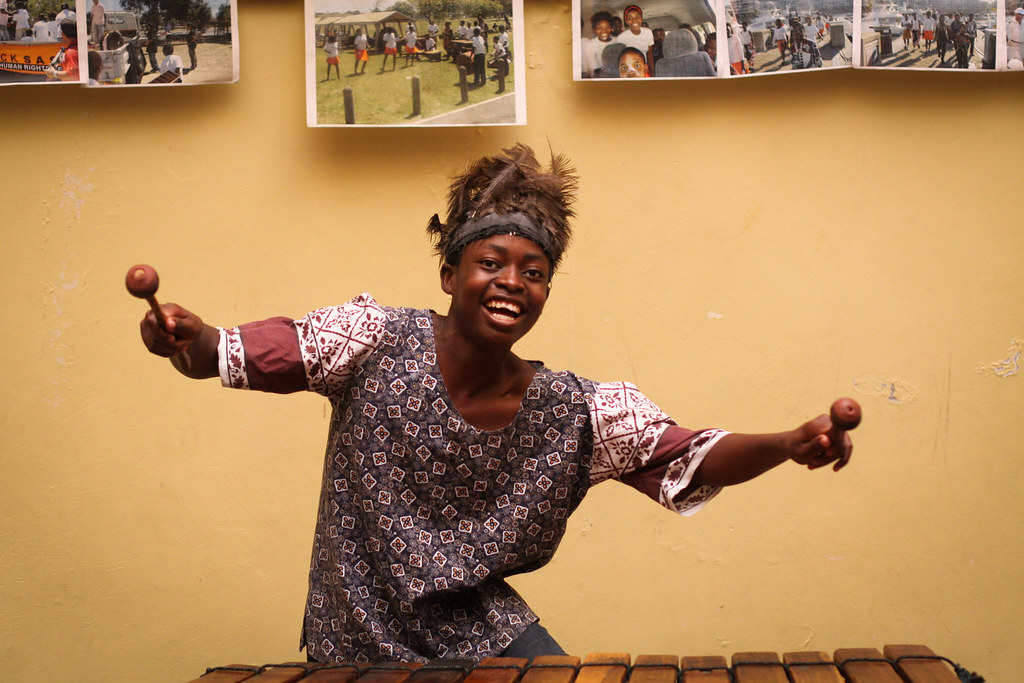 |
| Langa boy playing music at the Arts & Crafts center. |
We continued to walk through Langa and I heard more about daily life. We passed abandoned train cars that have been transformed into shops for selling food, getting a haircut, making a cheap phone call, basic auto repair, and other common services. We passed a pile of roasting, bloody sheep heads and I learned about smiley, a cheap and tasty (claimed, not tested) meal.
 |
| 34 RAND (~5 USD) for one sheep head, which is enough to feed 4 people. |
 |
| Smiley! |
I asked
Mcebisi why there were so many Coke-a-Cola signs on buildings and shops and shacks. He told me that Coke will give a free refrigerator to any establishment that advertises their brand and sells their product. This helps explain why it's so common to see Coke signs all over developing areas!
We discussed the different economic classes in Langa and other townships, mostly identified by the cost and location of their home. Here are some details:
Upper Class
The "Settler" homes of Langa, also known as "Beverly hills" of Langa are homes (~3 bedroom) that cost ~500,000 RAND (~70,000 USD). From the outside, these houses looked like any average single-family home you might find within the U.S. Well built, brightly painted, and situated on a larger lot of land than you'd find in a majority of residential properties in the California Bay Area. Mcebisi tells me that the people that live in these houses are known as "Black Diamonds", the growing black middle class in South Africa. Despite the poverty and lacking access to public resources, they prefer to live in the townships because of the community and culture.
Lower Class
The vast majority of people in Langa cannot afford a house and live in hostels or shanty towns. Hostels are housing units that were built in the 1920's to host migrant workers from the Eastern Cape. Each hostel consisted of units or apartments, with each unit having three or four rooms. Each room housed three to four men, and women were not allowed. When the ban on women was lifted, each room soon became the home of three families. The rooms are ~6 sq. meters and children slept on the floor and the parents in a tiny bed. The old hostels still exist and are still being used by many families in Langa. I visited this hostel which had 3 rooms, each with 3 families living in them.
 |
| 9 families, most with more than 3 people, share this sink. |
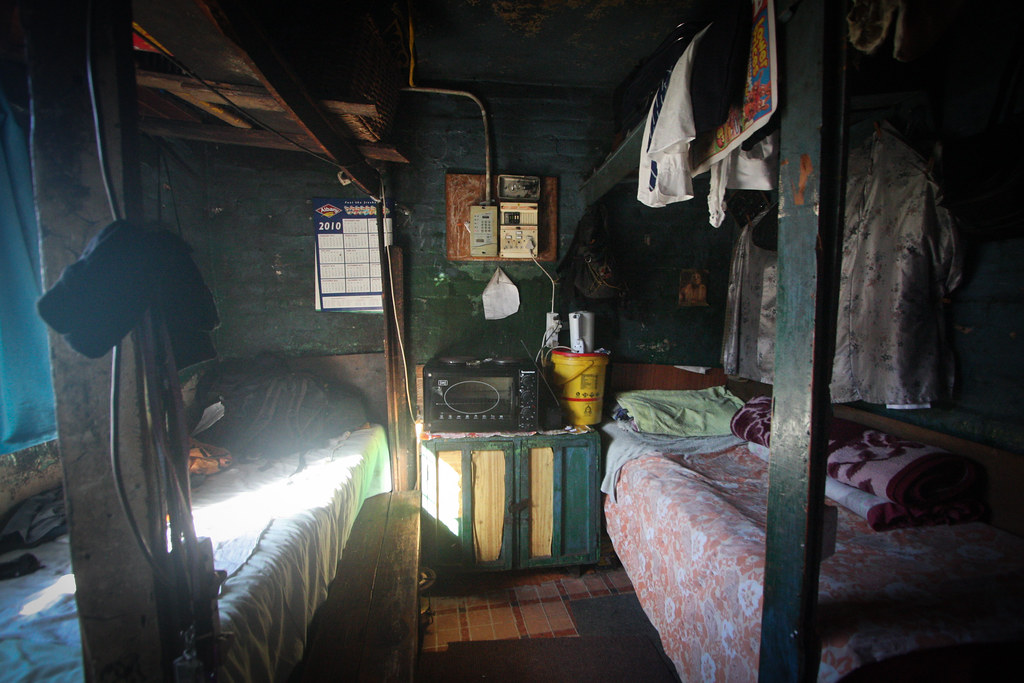 |
| Two families (typically a mother, father, and 2+ children) share this room. |
Shanties in Langa are the cheapest way to live. The land is free and people usually build a shack with whatever scrap material is available around Langa or in nearby dumpsters. In the cheapest case, it only costs about 200 RAND (< 30USD) to buy nails. You can alternatively pay a "professional" shanty builder for about 5000 RAND (700 USD). All shanties have access to outhouses (cleaned once a week by government) and water hoses for shared laundry and drinking.
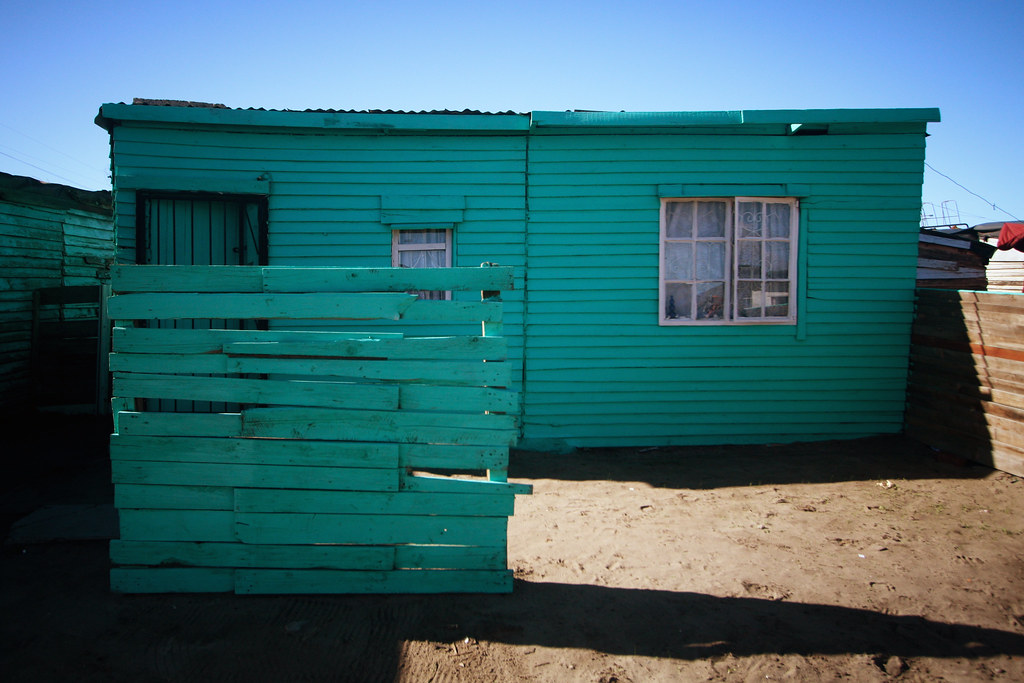 |
| Built by a professional shanty builder. |
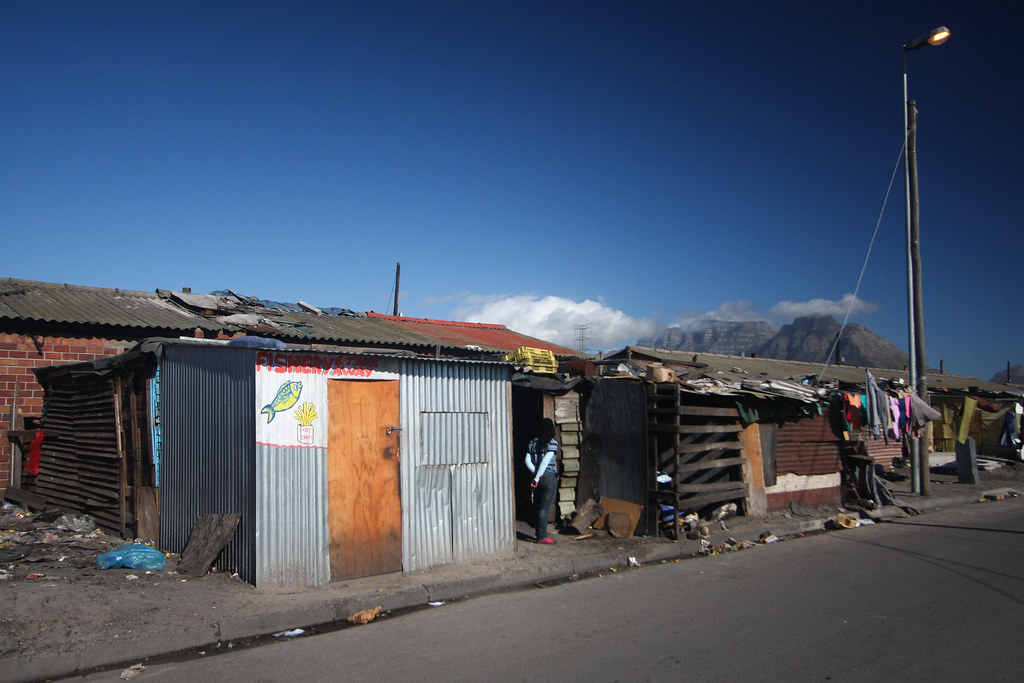 |
| Typical shanty in Langa. |
 |
| Woman pumping water near the shanties. |
Middle class
Somewhere between the majority poor and minority upper class sits the middle class. Some choose to upgrade shanty life by building on a house property and pay the person rent for 150 RAND (~20 USD) per month, which gives them direct access to water and electricity. This is the living situation my guide had. Others live in renovated hostels for single families.
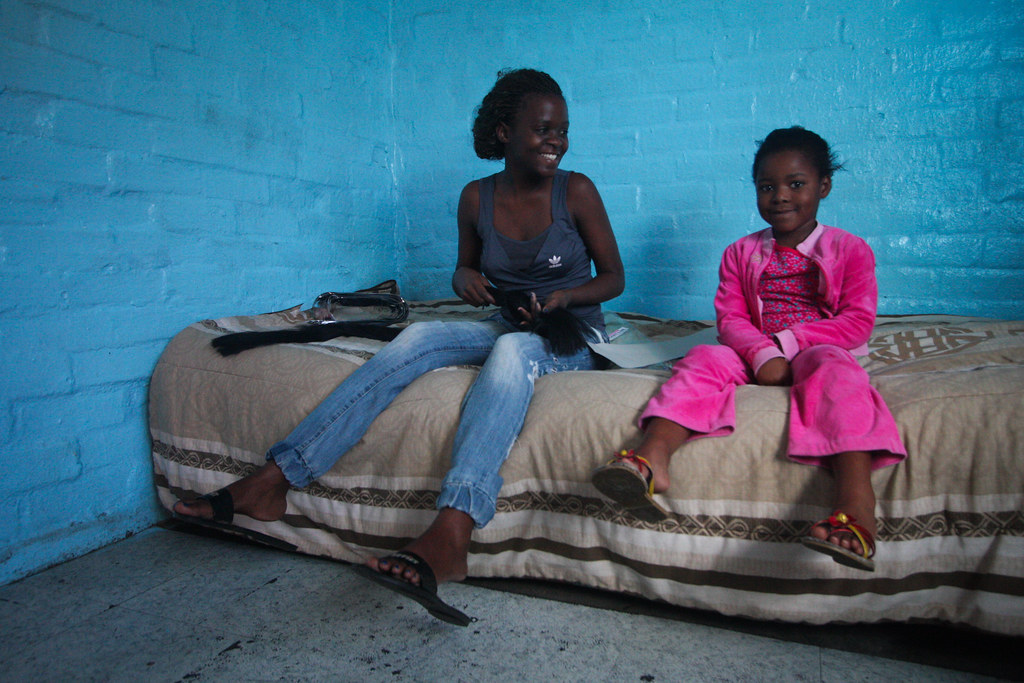 |
| Renovated hostile for a single family. |
And then there are brand new and beautiful housing units built by the government and ready for use. Depressingly, nobody currently lives there and they've been empty for 6 months because it's too expensive for anyone to afford at 3500 RAND (500 USD) per month.
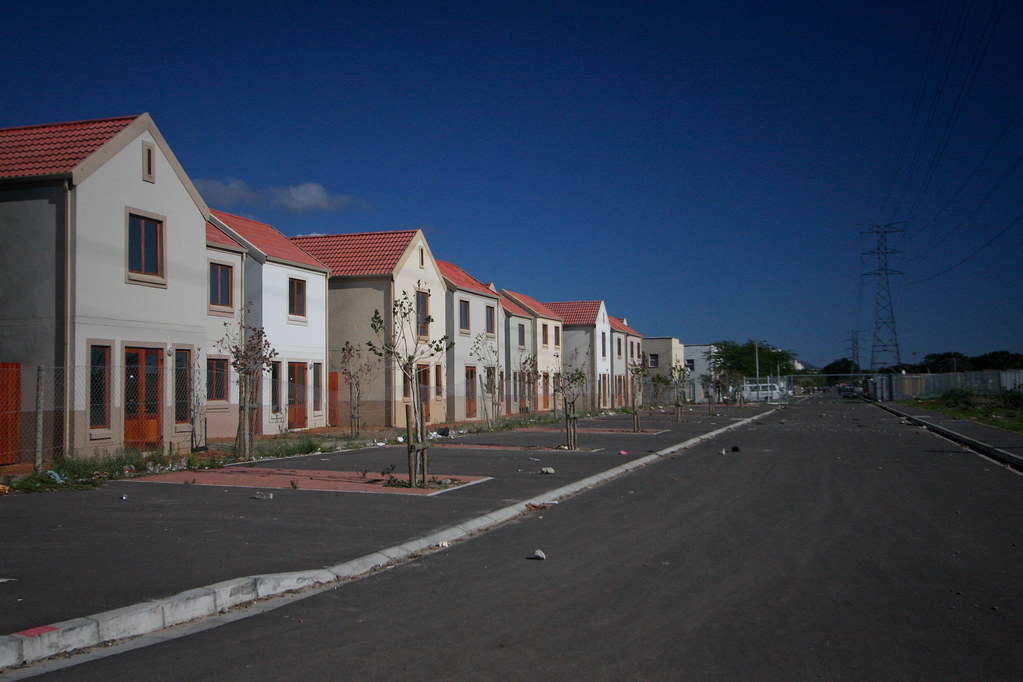 |
| Brand new housing establishments in Langa. They are beautiful, new and completely unlived in. |
While touring Langa, everyone I passed was smiling, passively friendly, and only moderately curious in my presence. The mood was noticeably different than other impoverished areas I've visited, where locals are openly and directly begging for money and food. A few children came by to inspect me and one hugged my leg before running off to play. At no point did anyone ask me for money, though need here was far greater than anywhere else I've visited.
Our last stop was near some bars and BBQs. "Saturdays and Sundays are for beer, meat, partying,"
Mcebisi tells me quite matter-of-factly. He again comments on the lack of interest in expanding your mind and obsession of status among the majority of people living in the townships. With every Mercedes that passes, he scoffs at the skewed idol worship. He mentions that having a nice car is the only way to get a girl's attention (some things are the same everywhere), and it's common for men to buy very cheap cars and steal expensive car parts to attract more women.
 |
| Mzoli's, a famous township BBQ |
Throughout our tour, Mcebisi talked frankly and openly about serious problems in South Africa: AIDs, discrimination, poverty, government, progress. I felt completely comfortable talking with him and found his perspective on all the topics informed, interesting, and honest. Taking this tour was the highlight of my trip in South Africa and a truly humbling and enlightening experience.












No comments:
Post a Comment